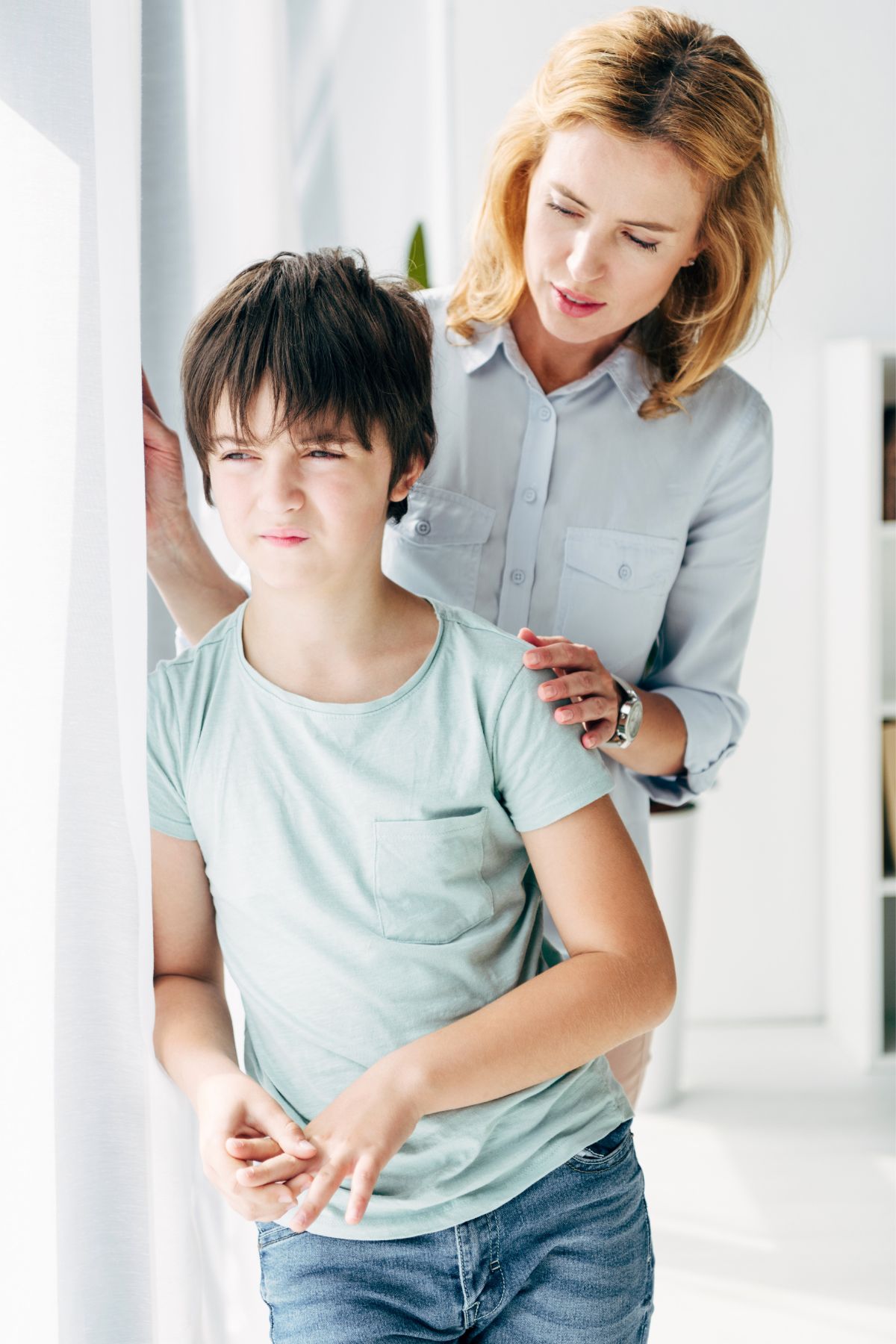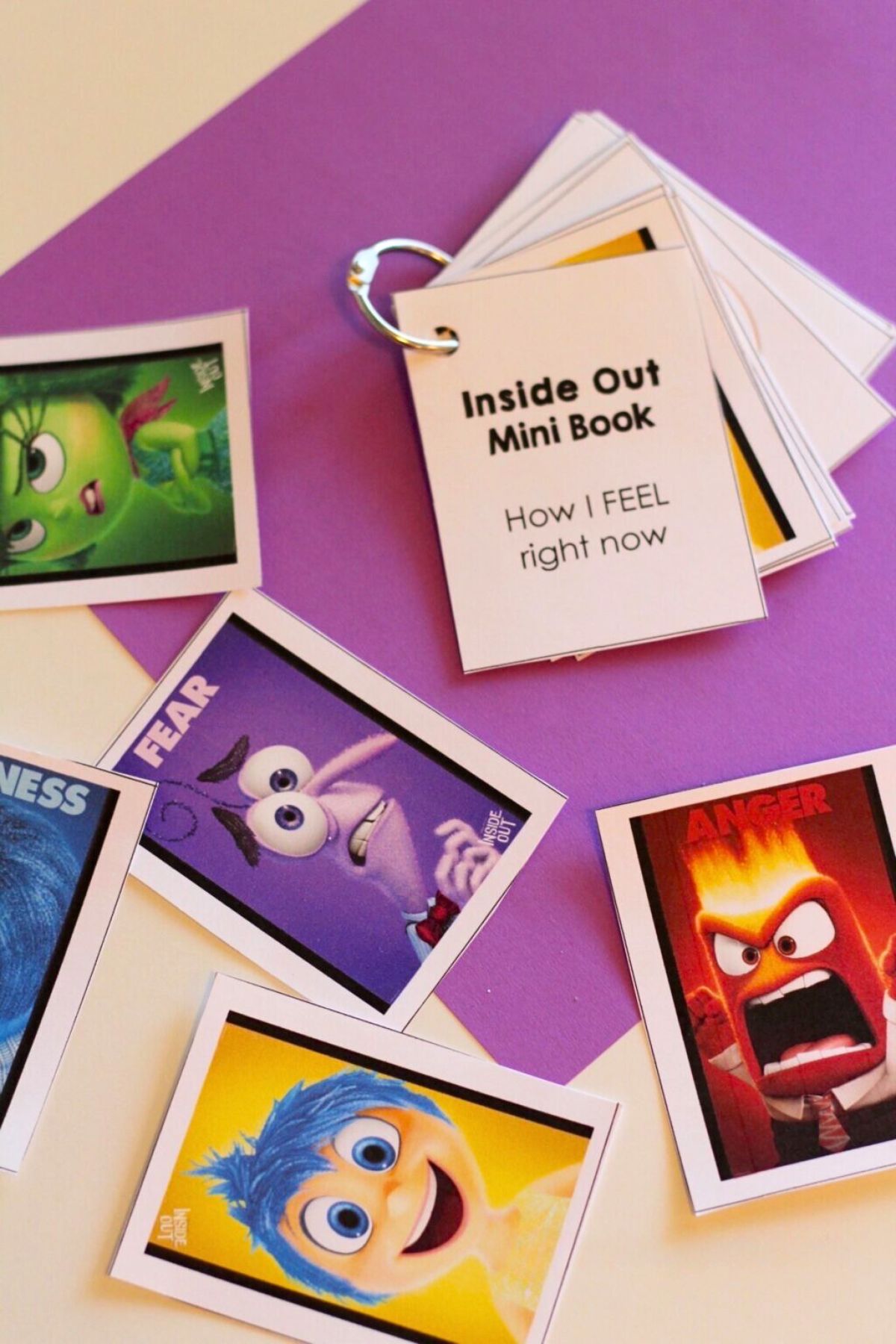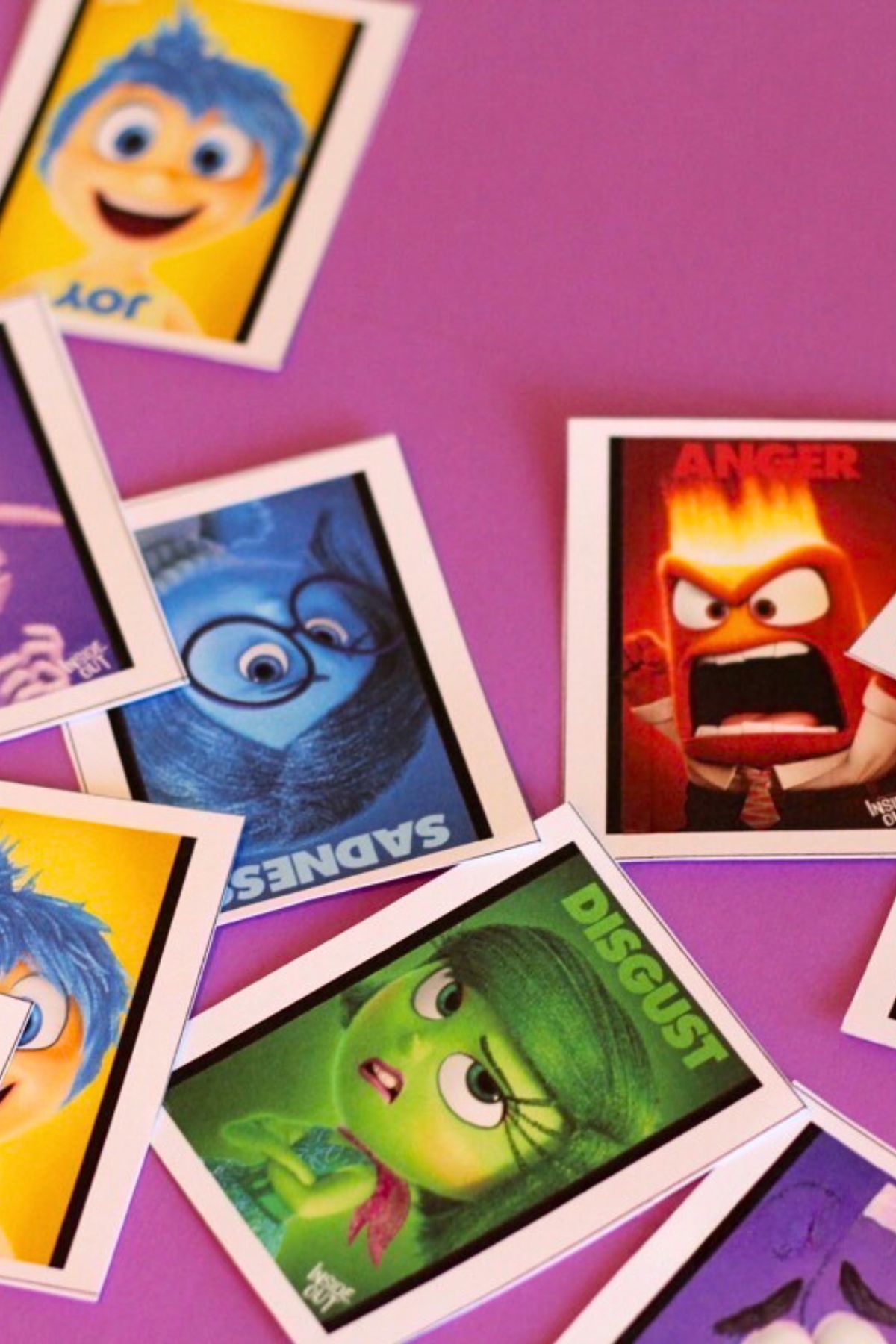Wondering how to help your little one understand their emotions? The characters from Inside Out—Joy, Sadness, Fear, Anger, and Disgust—can be a perfect tool for explaining feelings. Here’s a fun, easy way to talk with your kids about emotions and keep the conversation going!

If you’ve watched Inside Out, you know it’s more than just a movie—it’s a way to make emotions relatable and understandable for kids. As a parent of a young child, you might think that identifying feelings would get easier as they grow older, but it’s something we all continue to work on, even as adults.
Using the movie as a guide, you can teach your kids to recognize their emotions and talk about them in positive, healthy ways.
Using Inside Out to Help Kids Understand and Express Their Emotions
Step 1 – Watch Inside Out with Your Child
If you haven’t seen it yet, Inside Out takes place in the mind of 11-year-old Riley, where her emotions—Joy, Sadness, Fear, Anger, and Disgust—guide her through a major life change. Each emotion plays an important role, just like in real life.
Watching this movie with your child opens the door for important conversations about feelings and how they affect us.
You can say something like, “Remember how Joy helped Riley feel happy when she was playing? But sometimes Sadness showed up when things were hard. That’s normal!”

Step 2 – Download and Print the Cards
Grab the printable below to print on white cardstock and laminate if you want to make the set last. Print one set of character cards, cut them out and punch a small hole in the top left corner.
Step 3 – Create the Inside Out Mini-Book
After watching the movie, you can create a simple mini-book by using a jump ring through the hole you punched in the cards. You and your child can then use the mini-book to explore their emotions. Each page features a character from the movie, like Joy or Anger, and there’s space to add new ones. This mini-book is a fun way for kids to personalize their emotional experiences.
I added a few pages of blank faces. Here, kiddos can draw in faces of other emotions they might be feeling. Because kids have less life experience, sometimes they may not even have a word for what it is they are feeling.
I’ve included a list of emotions for just that reason. With young clients I’ve made a game out of exploring that list by each of us taking turns making a face for each emotion. Sometimes I’ll make a face and they guess what the emotion is.
The boys always like the “Constipation” face (which is really either concentration or straining, but well, you know … boys!) If you can’t think of how to draw a certain emotion, Google and Pinterest have a wealth ideas!
Print out blank faces, and let your child draw expressions for emotions not shown in the movie, like confusion or excitement. Some kids don’t always know the words for what they’re feeling, so this activity helps them visualize and name their emotions.

Step 4 – Keep the Conversation Going with Fun Games
The mini-book doesn’t have to be something you pull out every day, but it’s a great tool to keep handy for when your child is feeling a bit overwhelmed. You can also print out cards featuring the Inside Out characters and turn it into a game of memory. This makes the conversation about emotions playful and light-hearted, but still effective.
When your child is feeling an emotion like Anger or Sadness, bring out the cards and say, “Who do you feel like right now? Maybe a little like Anger?” This helps them connect the feeling to a character they’re familiar with and makes talking about tough emotions a little easier.
Step 5 – Teach Kids How to Handle Their Emotions
The most important lesson you can teach your child is that no emotion is bad—it’s what we do with those emotions that matters. It’s okay to feel sad one day and happy the next. The key is learning how to express those feelings in a healthy way.
When Anger shows up, maybe you take a few deep breaths like Riley does in the movie before reacting. Talking about emotions regularly helps your child learn that they’re not alone in how they feel, and it gives them the tools to deal with those feelings in positive ways.
Emotions Are a Lifelong Conversation
Remember, talking about emotions isn’t something we outgrow—it’s a lifelong process. The cool thing is that Inside Out gives us a fun, relatable way to keep that conversation going with our kids.
So the next time your child is struggling with a big feeling, pull out the mini-book or play the card game, and keep the conversation flowing.
To grab a copy of the Talking About Emotions Printable throw your email in the box below:
More Resources for Helping Your Child Navigate Emotions:
- How To Get Your Kids To Open Up
- Handling Sadness, Tragedy And Grief As A Family
- Helping Kids Manage Anxiety
- Noticing your Kids…in a Good Way!
PIN THIS FOR LATER

TeachMama is grateful to Disney for the opportunity to attend the 2015 Disney Social Media Moms Conference and for the opportunity to create this helpful tool for parents.

Fabulous! just a tool I was looking for, plus the background info was fun!
I run an after school program and would love to use this with my students!
I love this!
thank you thank you!
Looking forward to using the cards
Hi,
I love the movie Inside Out and use it with my 5yo students regularly. Would love to access your little booklet to use with them but can’t find a link to click on. Could you please send me the file?
Many thanks,
Fiona
I am interested in the inside out mini book
I can’t find the email box to get the minibook!!
I would love a copy of the “Inside Out” cards. These look great and would be so helpful.
!Hola! Me parece un recurso genial y estaría encantada de tenerlo! Gracias!!
Hola! Por favor ingrese su nombre en el cuadro de la publicación, ¡y el imprimible estará en su bandeja de entrada en breve! ¡Gracias!
I would really love to have this mini book of emotions to use it in my class with students but I can’t find where to download it. Would you be so nice and help me. Thank you so much 🙂
YAYYY! Glad to hear it! All you need to do is go back to the post, look for the box that says INSIDE OUT MINI-BOOK right under the image of the printable, and it will end up in your inbox! Thank you!!
I would love to use these cards with my students. They would love them!
YAYYY! Glad to hear it! All you need to do is go back to the post, look for the box that says INSIDE OUT MINI-BOOK right under the image of the printable, and it will end up in your inbox! Thank you!!
I am a clinician and would love these.
YAYYY! Glad to hear it! All you need to do is go back to the post, look for the box that says INSIDE OUT MINI-BOOK right under the image of the printable, and it will end up in your inbox! Thank you!!
Inside out resources plus Interested in other relevant psychotherapy resources for children